 Canada’s government has moved quickly to protect and strengthen the sectors most affected by U.S. tariffs – introducing new measures to help workers gain new skills, support businesses as they modernise and diversify, and boost domestic demand for Canadian goods. Building on previously announced measures to help transform the Canadian steel and softwood lumber industries, the following new initiatives were announced:
Canada’s government has moved quickly to protect and strengthen the sectors most affected by U.S. tariffs – introducing new measures to help workers gain new skills, support businesses as they modernise and diversify, and boost domestic demand for Canadian goods. Building on previously announced measures to help transform the Canadian steel and softwood lumber industries, the following new initiatives were announced:
- Further limit foreign steel imports
- Make it easier to build with Canadian steel and Canadian lumber
- Canada will work with railway companies to cut freight rates for transporting Canadian steel and lumber interprovincially by 50%.
- To maximise the use of Canadian softwood lumber in housing, Build Canada Homes will prioritise shovel-ready, multi-year projects.
- Canada will implement our Buy Canadian Policy later this year, which requires that all contracts worth over $25 million prioritise Canadian materials – including steel and lumber.
- Increase protections for Canadian steel and lumber workers and businesses
- Canada will earmark more than $100 million to provide support in all sectors with an active Work-Sharing agreement.
- Canada will provide an additional $500 million to the BDC Softwood Lumber Guarantee Program.
- For softwood lumber firms facing liquidity pressures, Canada will earmark $500 million under the Large Enterprise Tariff Loan facility.
- Canada will launch a Canadian Forest Sector Transformation Task Force.
 The United Steelworkers union (USW) welcomes the federal government’s new measures to support Canada’s steel and softwood lumber sectors, calling them a meaningful step forward in the face of US tariffs and global market instability. The package includes tighter import controls, a 25% surtax on steel derivatives, strengthened border enforcement, expanded liquidity supports for softwood producers, a top-up to the Work-Sharing program, lower interprovincial freight costs, and new domestic-content requirements for federal projects. …Marty Warren, USW National Director… underscored that the Work-Sharing top-up will help workers stay on the job during temporary downturns and also pointed to the importance of strengthening procurement rules. On softwood lumber, the union welcomes the government’s efforts… “But let’s be honest, forestry towns cannot rebuild on temporary fixes. A long-term resolution to the softwood lumber dispute with the United States is essential. Without it, workers and communities remain vulnerable to decisions they cannot control.”
The United Steelworkers union (USW) welcomes the federal government’s new measures to support Canada’s steel and softwood lumber sectors, calling them a meaningful step forward in the face of US tariffs and global market instability. The package includes tighter import controls, a 25% surtax on steel derivatives, strengthened border enforcement, expanded liquidity supports for softwood producers, a top-up to the Work-Sharing program, lower interprovincial freight costs, and new domestic-content requirements for federal projects. …Marty Warren, USW National Director… underscored that the Work-Sharing top-up will help workers stay on the job during temporary downturns and also pointed to the importance of strengthening procurement rules. On softwood lumber, the union welcomes the government’s efforts… “But let’s be honest, forestry towns cannot rebuild on temporary fixes. A long-term resolution to the softwood lumber dispute with the United States is essential. Without it, workers and communities remain vulnerable to decisions they cannot control.”

 Help is on the way for Canadian steel producers and those in softwood lumber affected by the ongoing trade dispute with the United States. Multiple senior government sources confirmed that Prime Minister Mark Carney will announce measures on Wednesday to protect the steel industry, which has been hit with 50 per cent tariffs by the Trump administration. The measures include cutting limits to the amount of steel that can be imported into the country from nations that do not have a free trade agreement with Canada. …The Carney government will also increase the total money available to struggling softwood lumber companies to $1.2 billion. It’s a $500-million increase from the previously announced Softwood Lumber Development Program, which gives companies access to government-backed loans. …Trade talks between the two countries have been put on pause for the last month.
Help is on the way for Canadian steel producers and those in softwood lumber affected by the ongoing trade dispute with the United States. Multiple senior government sources confirmed that Prime Minister Mark Carney will announce measures on Wednesday to protect the steel industry, which has been hit with 50 per cent tariffs by the Trump administration. The measures include cutting limits to the amount of steel that can be imported into the country from nations that do not have a free trade agreement with Canada. …The Carney government will also increase the total money available to struggling softwood lumber companies to $1.2 billion. It’s a $500-million increase from the previously announced Softwood Lumber Development Program, which gives companies access to government-backed loans. …Trade talks between the two countries have been put on pause for the last month. MACKENZIE, BC — Forestry company Conifex Timber announced that it will temporarily curtail operations at its Mackenzie, BC sawmill for a planned four-week period commencing December 15, 2025. The curtailment is being implemented in response to, among other things, continued weakness in North American lumber markets. The curtailments will begin on December 15, for a planned four-week duration, Conifex said, adding that it is expected to reduce production by roughly 13 million board feet. The North American timber industry has gone through several curtailments in response to US President Trump’s decision to implement tariffs. …The company said it does not anticipate any challenges in securing sawlogs to maintain capacity operations in the future, once market conditions permit a return to full operations. It also expects to see gradual recovery in demand in the second half of 2026.
MACKENZIE, BC — Forestry company Conifex Timber announced that it will temporarily curtail operations at its Mackenzie, BC sawmill for a planned four-week period commencing December 15, 2025. The curtailment is being implemented in response to, among other things, continued weakness in North American lumber markets. The curtailments will begin on December 15, for a planned four-week duration, Conifex said, adding that it is expected to reduce production by roughly 13 million board feet. The North American timber industry has gone through several curtailments in response to US President Trump’s decision to implement tariffs. …The company said it does not anticipate any challenges in securing sawlogs to maintain capacity operations in the future, once market conditions permit a return to full operations. It also expects to see gradual recovery in demand in the second half of 2026.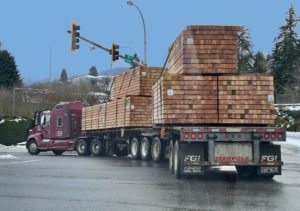 Ottawa threw the beleaguered softwood lumber industry a bone. …The new measures include $500 million in new loan guarantees for softwood lumber companies. “Loans are only good if i can sell my prioduct and pay for those loans,” said Brian Menzies, at the Independent Wood Processors Association of BC. “At 45%, I can t sell my product into the United States.” Other steps announced include cutting freight rates. …The measures are window dressing – say some – when compared to the impact of the steel industry supports. “I’m afraid we’ve come to the point that ‘Sophies choice’ is happening and softwood lumber is the child who’s going to be left behind,” said Menzies. It’s a concern shared at Leslie Forest Products, in Delta where James Sanghera said the measures won’t make a difference. “Most of the wood we’re sending down to the States is going on truck.”
Ottawa threw the beleaguered softwood lumber industry a bone. …The new measures include $500 million in new loan guarantees for softwood lumber companies. “Loans are only good if i can sell my prioduct and pay for those loans,” said Brian Menzies, at the Independent Wood Processors Association of BC. “At 45%, I can t sell my product into the United States.” Other steps announced include cutting freight rates. …The measures are window dressing – say some – when compared to the impact of the steel industry supports. “I’m afraid we’ve come to the point that ‘Sophies choice’ is happening and softwood lumber is the child who’s going to be left behind,” said Menzies. It’s a concern shared at Leslie Forest Products, in Delta where James Sanghera said the measures won’t make a difference. “Most of the wood we’re sending down to the States is going on truck.”






 KINCHELOE, Michigan — A unique manufacturing facility opened in September along a CN line in Kincheloe, Michigan. Located in the Chippewa County Industrial Park in Michigan’s upper peninsula, the $7.3 million, 20,000-square foot facility serves as a transportation and logistics hub for wood and lumber dealer Maple Transport. The facility features a rail spur and is situated near Interstate 75. The new manufacturing hub will support Michigan’s $20 billion forest products industry and serve other new or expanding businesses, Maple Transport officials say. Project funding included $5.8 million from the U.S. Economic Development Administration, $1.25 million in matching dollars from the Michigan Economic Development Corp., and contributions from the Chippewa County Economic Development Corp. and a Strategic Site Readiness Program grant. Construction began in spring 2024 on the manufacturing facility, which Maple Transport will use to ship wood products, CN officials said in an email. The facility will be served by both CN and trucks.
KINCHELOE, Michigan — A unique manufacturing facility opened in September along a CN line in Kincheloe, Michigan. Located in the Chippewa County Industrial Park in Michigan’s upper peninsula, the $7.3 million, 20,000-square foot facility serves as a transportation and logistics hub for wood and lumber dealer Maple Transport. The facility features a rail spur and is situated near Interstate 75. The new manufacturing hub will support Michigan’s $20 billion forest products industry and serve other new or expanding businesses, Maple Transport officials say. Project funding included $5.8 million from the U.S. Economic Development Administration, $1.25 million in matching dollars from the Michigan Economic Development Corp., and contributions from the Chippewa County Economic Development Corp. and a Strategic Site Readiness Program grant. Construction began in spring 2024 on the manufacturing facility, which Maple Transport will use to ship wood products, CN officials said in an email. The facility will be served by both CN and trucks.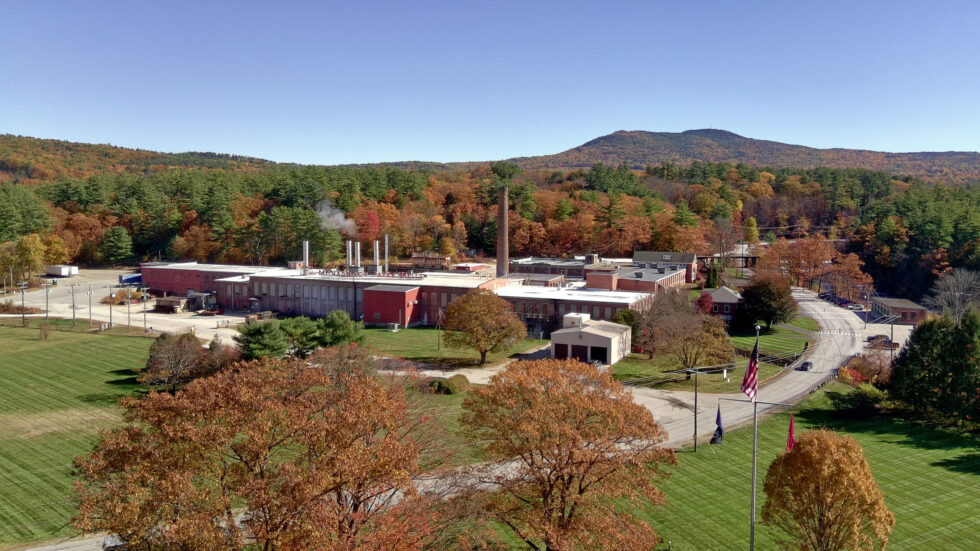
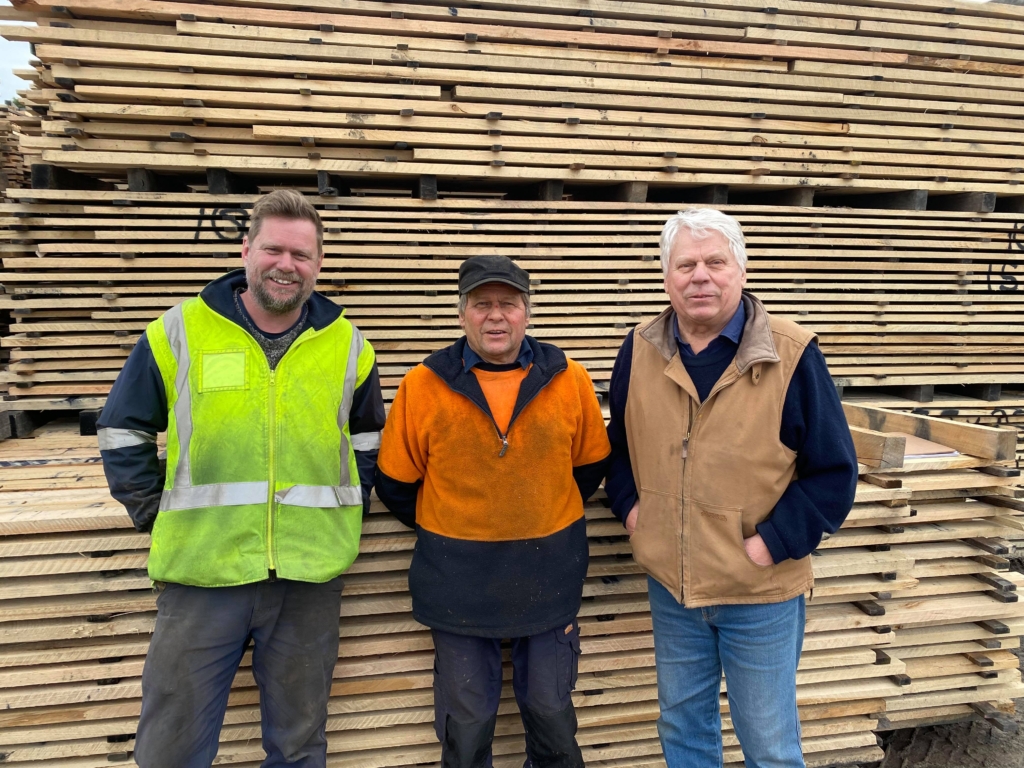

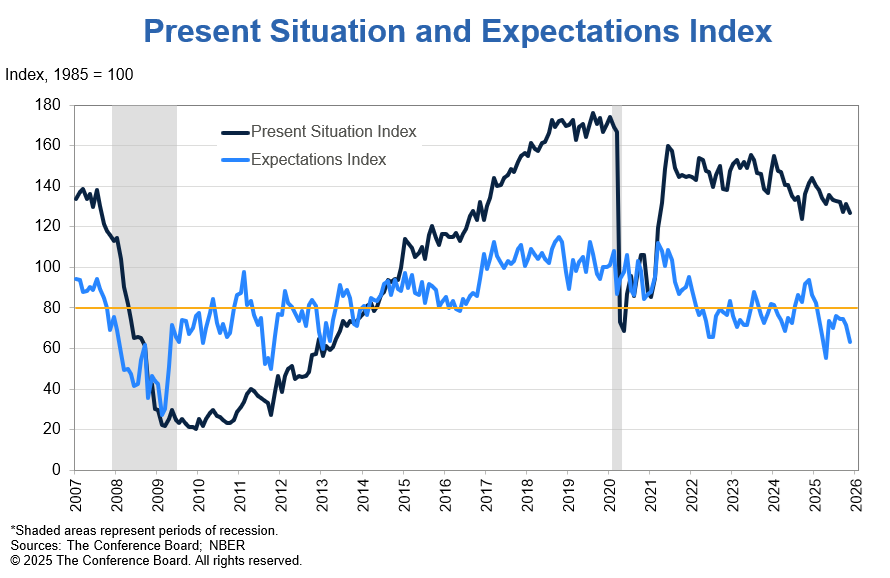


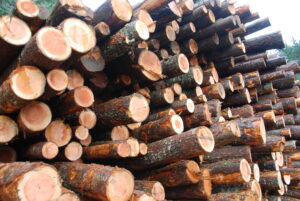 MOSCOW — Russia’s forestry sector could face a deep contraction next year as sanctions tighten, interest rates remain high and the ruble stays strong, Deputy Industry and Trade Minister Mikhail Yurin said Thursday. Addressing a Federation Council committee, Yurin said the industry has entered a “downward trend,” with the worst-case scenario pointing to a 20-30% drop in output in 2026. The ministry expects already falling production to continue declining into 2027 if geopolitical conditions worsen, Interfax quoted Yurin as saying. According to the Economic Development Ministry, wood-processing is among the weakest performers in Russia’s industrial landscape. Output fell 4.3% in the third quarter and the slump accelerated to 7.8% in October. …He said Russian timber exports have fallen by more than 20% since before the war, from $12.5 billion in 2021 to to $9.8 billion. Logging volumes are expected to hit a four-year low of 182 million cubic meters this year.
MOSCOW — Russia’s forestry sector could face a deep contraction next year as sanctions tighten, interest rates remain high and the ruble stays strong, Deputy Industry and Trade Minister Mikhail Yurin said Thursday. Addressing a Federation Council committee, Yurin said the industry has entered a “downward trend,” with the worst-case scenario pointing to a 20-30% drop in output in 2026. The ministry expects already falling production to continue declining into 2027 if geopolitical conditions worsen, Interfax quoted Yurin as saying. According to the Economic Development Ministry, wood-processing is among the weakest performers in Russia’s industrial landscape. Output fell 4.3% in the third quarter and the slump accelerated to 7.8% in October. …He said Russian timber exports have fallen by more than 20% since before the war, from $12.5 billion in 2021 to to $9.8 billion. Logging volumes are expected to hit a four-year low of 182 million cubic meters this year. Japan’s housing starts rose 3.2% year-on-year in October 2025, defying market expectations of a 5.2% decline and reversing a 7.3% fall in September. It was the first annual increase since March, driven by rebounds in rented units (4.2% vs -8.2%), built-for-sale homes (14.8% vs -8.3%), and prefabricated housing (9.2% vs -0.4%). However, weakness persisted in owned homes (-8.2% vs -5.6%), while issued units slumped sharply (-36.3% vs 53.7%) and two-by-four homes also turned negative (-3.8% vs 2.1%). [END]
Japan’s housing starts rose 3.2% year-on-year in October 2025, defying market expectations of a 5.2% decline and reversing a 7.3% fall in September. It was the first annual increase since March, driven by rebounds in rented units (4.2% vs -8.2%), built-for-sale homes (14.8% vs -8.3%), and prefabricated housing (9.2% vs -0.4%). However, weakness persisted in owned homes (-8.2% vs -5.6%), while issued units slumped sharply (-36.3% vs 53.7%) and two-by-four homes also turned negative (-3.8% vs 2.1%). [END]

 As the US Forest Service considers the future management of the Tongass National Forest, I hope that Alaska’s congressional delegation will listen to what Southeast Alaskans already know: Wild salmon are one of the Tongass’ most valuable resources. If we leave the trees standing and protect the habitat that fish need, the Tongass will continue to generate billions of dollars in natural dividends, in turn supporting thousands of fishing jobs and providing millions of pounds of nutritious seafood year after year. …For decades, Southeast Alaska’s communities and fishermen have fought industrial logging in the Tongass. …The harmful impacts of industrial logging on Southeast Alaska’s salmon watersheds and our natural dividends are not hypothetical. Protecting the Tongass is the most cost-effective way to improve ecosystem productivity and ensure the well-being for all who call Southeast home.
As the US Forest Service considers the future management of the Tongass National Forest, I hope that Alaska’s congressional delegation will listen to what Southeast Alaskans already know: Wild salmon are one of the Tongass’ most valuable resources. If we leave the trees standing and protect the habitat that fish need, the Tongass will continue to generate billions of dollars in natural dividends, in turn supporting thousands of fishing jobs and providing millions of pounds of nutritious seafood year after year. …For decades, Southeast Alaska’s communities and fishermen have fought industrial logging in the Tongass. …The harmful impacts of industrial logging on Southeast Alaska’s salmon watersheds and our natural dividends are not hypothetical. Protecting the Tongass is the most cost-effective way to improve ecosystem productivity and ensure the well-being for all who call Southeast home.  ARIZONA — For the first time in months, Forest Service timber managers last week attended a Natural Resources Working Group meeting on the continuing effort to restore Northern Arizona forests and protect communities including Payson, Show Low, Pinetop and Pine. Local officials and logging operators said they are still searching for ways to handle millions of tons of low-value brush, slash and small trees that crowd the region’s overgrown ponderosa pine forests. The group, formed through the Eastern Arizona Counties Organization, meets regularly with industry representatives and Forest Service staff. …The Four Forest Restoration Initiative (4FRI) completed about 18,000 acres of thinning in the past year. Mass layoffs and the shutdown limited collaboration and fieldwork. …Pascal Berlioux, executive director of the Eastern Arizona Counties Organization, said a major problem was reduced production at the Lignetics plant in Show Low, which normally buys large amounts of biomass for wood-pellet manufacturing.
ARIZONA — For the first time in months, Forest Service timber managers last week attended a Natural Resources Working Group meeting on the continuing effort to restore Northern Arizona forests and protect communities including Payson, Show Low, Pinetop and Pine. Local officials and logging operators said they are still searching for ways to handle millions of tons of low-value brush, slash and small trees that crowd the region’s overgrown ponderosa pine forests. The group, formed through the Eastern Arizona Counties Organization, meets regularly with industry representatives and Forest Service staff. …The Four Forest Restoration Initiative (4FRI) completed about 18,000 acres of thinning in the past year. Mass layoffs and the shutdown limited collaboration and fieldwork. …Pascal Berlioux, executive director of the Eastern Arizona Counties Organization, said a major problem was reduced production at the Lignetics plant in Show Low, which normally buys large amounts of biomass for wood-pellet manufacturing.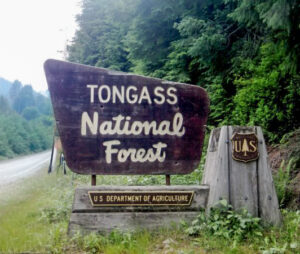 It was no surprise that everyone on the timber panel at this month’s Alaska Resource Development Council conference had the same message: The industry needs a larger supply of trees to cut. And a steady, bankable supply, said Joe Young, of Tok, who started Young’s Timber in Alaska’s Interior more than 30 years ago. …The Nov. 13 industry panel at the annual conference held in Anchorage also talked about demand for their product and the challenges in meeting that demand. Juneau attorney Jim Clark, said the Trump administration’s move to rescind the Roadless Rule, which has been around since 2001, could help open areas of the Tongass National Forest to logging. …The lack of timber sales, financial pressures and opposition from conservation groups have knocked down Alaska timber industry jobs from almost 4,000 in 1990 to about 700 in 2015 and just 360 in 2024, according to Alaska Department of Labor statistics.
It was no surprise that everyone on the timber panel at this month’s Alaska Resource Development Council conference had the same message: The industry needs a larger supply of trees to cut. And a steady, bankable supply, said Joe Young, of Tok, who started Young’s Timber in Alaska’s Interior more than 30 years ago. …The Nov. 13 industry panel at the annual conference held in Anchorage also talked about demand for their product and the challenges in meeting that demand. Juneau attorney Jim Clark, said the Trump administration’s move to rescind the Roadless Rule, which has been around since 2001, could help open areas of the Tongass National Forest to logging. …The lack of timber sales, financial pressures and opposition from conservation groups have knocked down Alaska timber industry jobs from almost 4,000 in 1990 to about 700 in 2015 and just 360 in 2024, according to Alaska Department of Labor statistics.
 The European Parliament has approved measures to simplify the EU Deforestation Regulation adopted in 2023, which aims to ensure that products sold in the EU are not sourced from deforested land, according to the European Parliament. The new position grants companies an additional year to comply with the regulation. Large operators and traders must apply the obligations from 30 December 2026, and micro and small enterprises from 30 June 2027. The extension is designed to support a smooth transition and allow upgrades to the IT system used for electronic due diligence statements. Parliament agreed that the responsibility for submitting due diligence statements should rest with businesses that first place products on the EU market, not with later traders. Micro and small primary operators will now be required to file only a single simplified declaration instead of full due diligence reports.
The European Parliament has approved measures to simplify the EU Deforestation Regulation adopted in 2023, which aims to ensure that products sold in the EU are not sourced from deforested land, according to the European Parliament. The new position grants companies an additional year to comply with the regulation. Large operators and traders must apply the obligations from 30 December 2026, and micro and small enterprises from 30 June 2027. The extension is designed to support a smooth transition and allow upgrades to the IT system used for electronic due diligence statements. Parliament agreed that the responsibility for submitting due diligence statements should rest with businesses that first place products on the EU market, not with later traders. Micro and small primary operators will now be required to file only a single simplified declaration instead of full due diligence reports.
 Africa’s forests have turned from a carbon sink into a carbon source, according to research that underscores the need for urgent action to save the world’s great natural climate stabilisers. The alarming shift, which has happened since 2010, means all of the planet’s three main rainforest regions – the South American Amazon, south-east Asia and Africa – are now part of the problem. Human activity is the primary cause of the problem. Farmers are clearing more land for food production. Infrastructure projects and mining are exacerbating the loss of vegetation and global heating – caused by the burning of gas, oil and coal – thereby degrading the resilience of ecosystems. …The worst affected were the tropical moist broadleaf forests in Democratic Republic of Congo, Madagascar and parts of west Africa. The study,
Africa’s forests have turned from a carbon sink into a carbon source, according to research that underscores the need for urgent action to save the world’s great natural climate stabilisers. The alarming shift, which has happened since 2010, means all of the planet’s three main rainforest regions – the South American Amazon, south-east Asia and Africa – are now part of the problem. Human activity is the primary cause of the problem. Farmers are clearing more land for food production. Infrastructure projects and mining are exacerbating the loss of vegetation and global heating – caused by the burning of gas, oil and coal – thereby degrading the resilience of ecosystems. …The worst affected were the tropical moist broadleaf forests in Democratic Republic of Congo, Madagascar and parts of west Africa. The study,  BRUSSELS — The European Commission has unveiled a new plan to end the dominance of planet-heating fossil fuels in Europe’s economy — and replace them with trees. The
BRUSSELS — The European Commission has unveiled a new plan to end the dominance of planet-heating fossil fuels in Europe’s economy — and replace them with trees. The 
 A new
A new 


 The
The